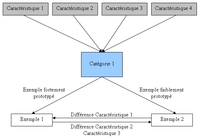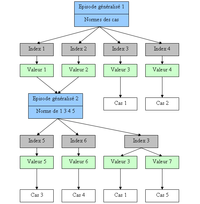This article may be confusing or unclear to readers. In particular, the article doesn't describe case-based reasoning from a technical point of view, leaving readers uncertain about how programmers actually implement it. (December 2021) |
In artificial intelligence and philosophy[verification needed], case-based reasoning (CBR), broadly construed, is the process of solving new problems based on the solutions of similar past problems.[1][2]
In everyday life, an auto mechanic who fixes an engine by recalling another car that exhibited similar symptoms is using case-based reasoning. A lawyer who advocates a particular outcome in a trial based on legal precedents or a judge who creates case law is using case-based reasoning. So, too, an engineer copying working elements of nature (practicing biomimicry) is treating nature as a database of solutions to problems. Case-based reasoning is a prominent type of analogy solution making.
It has been argued[by whom?] that case-based reasoning is not only a powerful method for computer reasoning, but also a pervasive behavior in everyday human problem solving; or, more radically, that all reasoning is based on past cases personally experienced. This view is related to prototype theory, which is most deeply explored in cognitive science.
- ^ Kolodner, Janet L. "An introduction to case-based reasoning." Artificial intelligence review 6.1 (1992): 3-34.
- ^ Weir, B. S. (1988). Proceedings of the Second International Conference on Quantitative Genetics (p. 537). Sinauer Associates.


